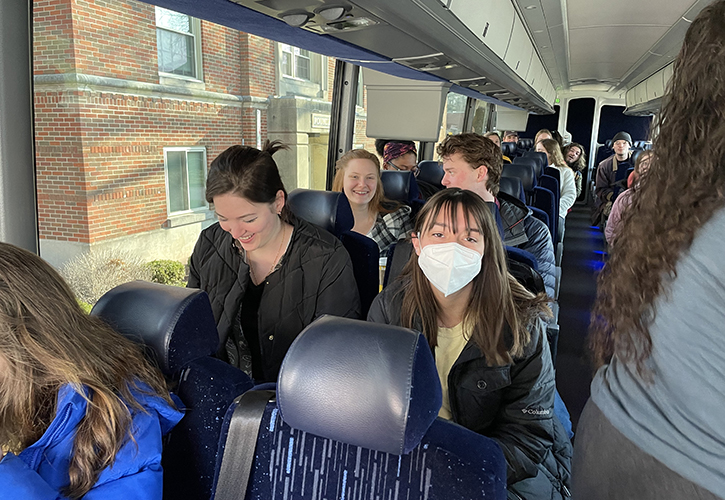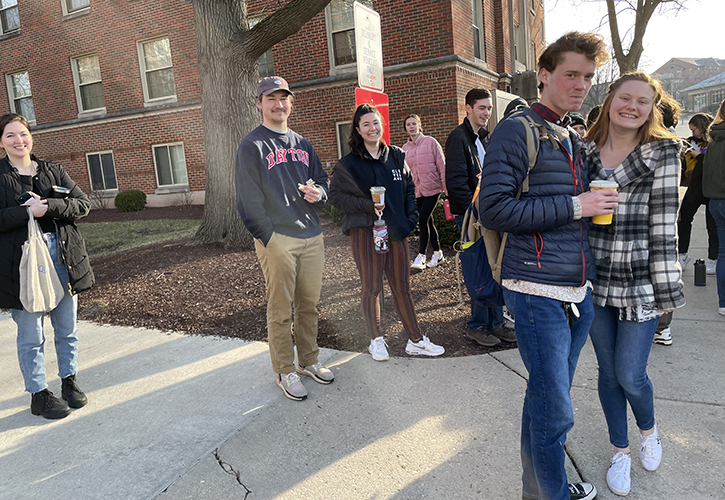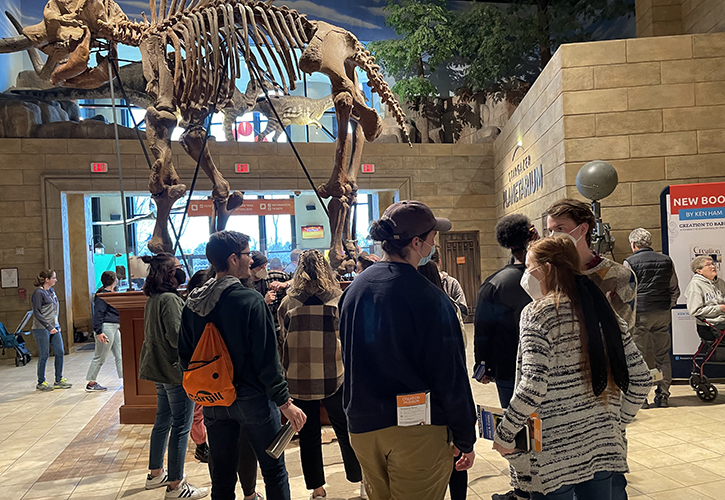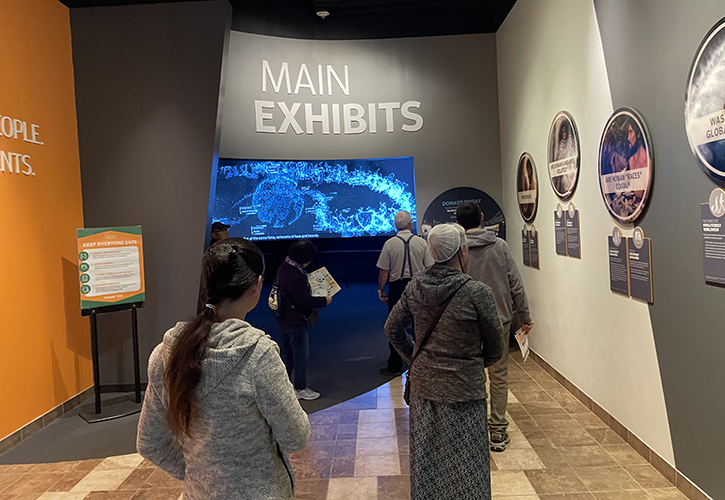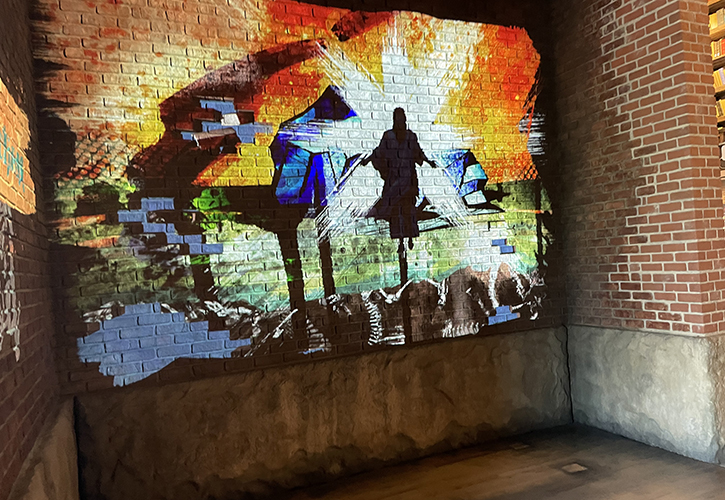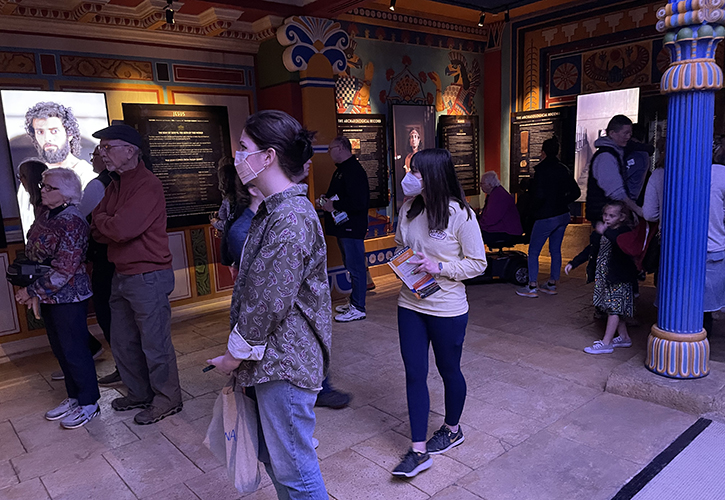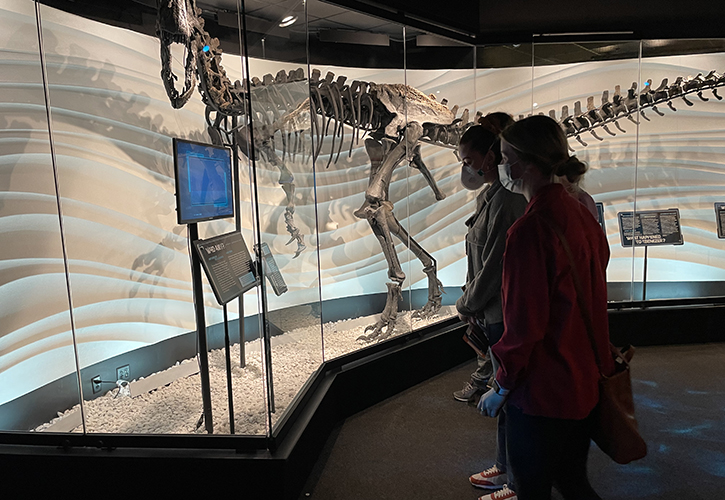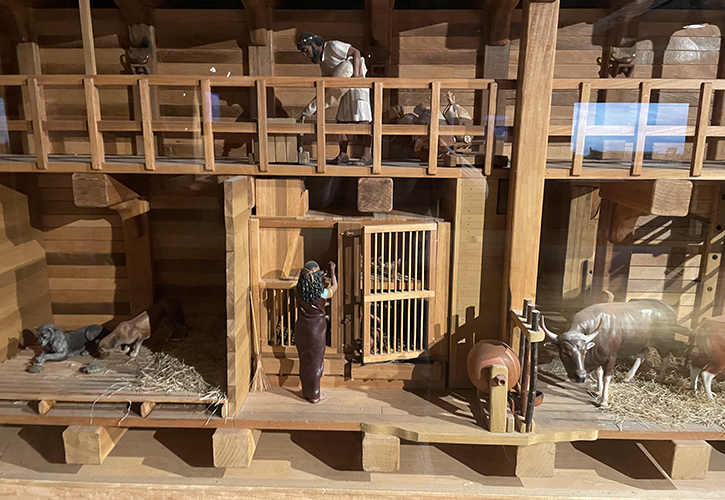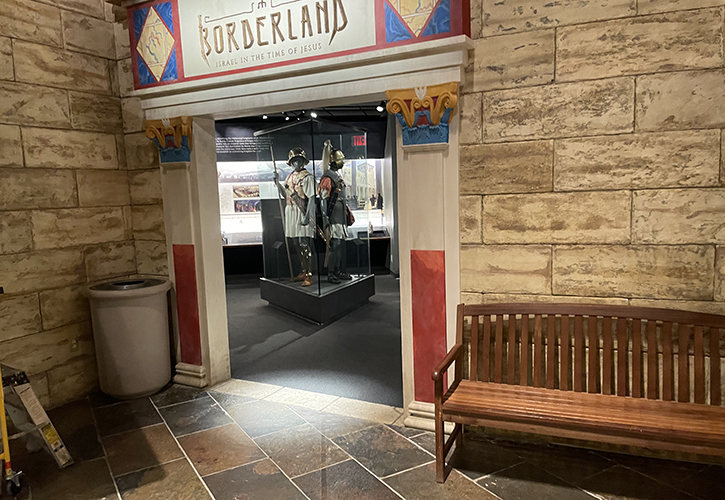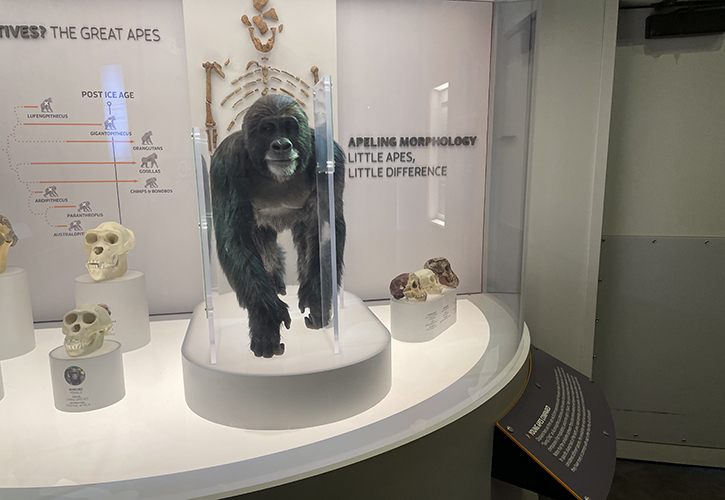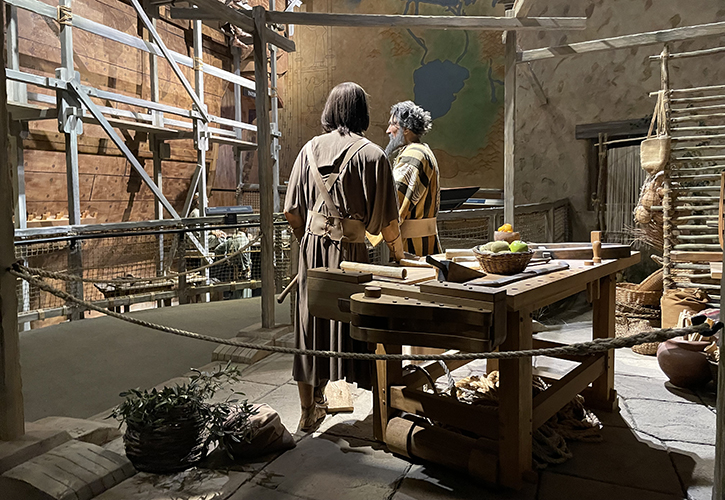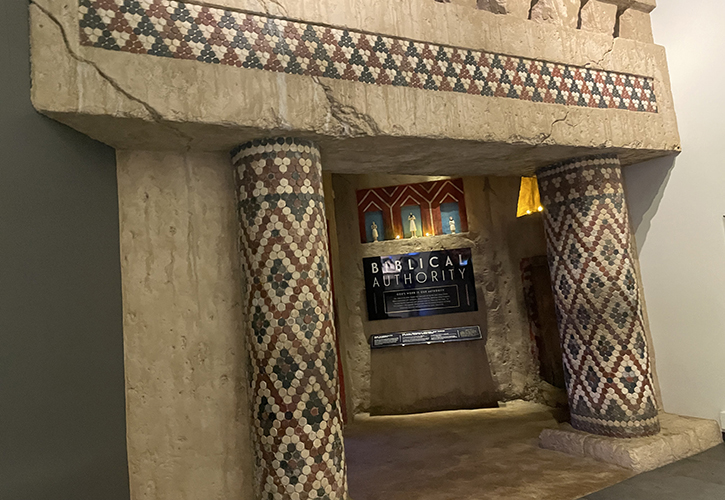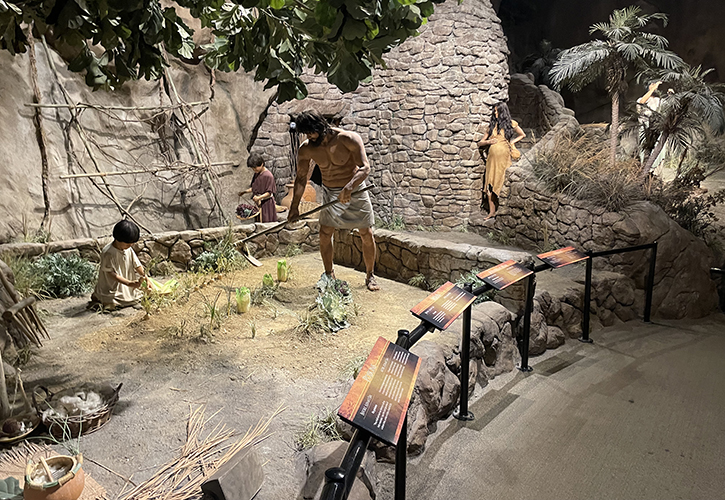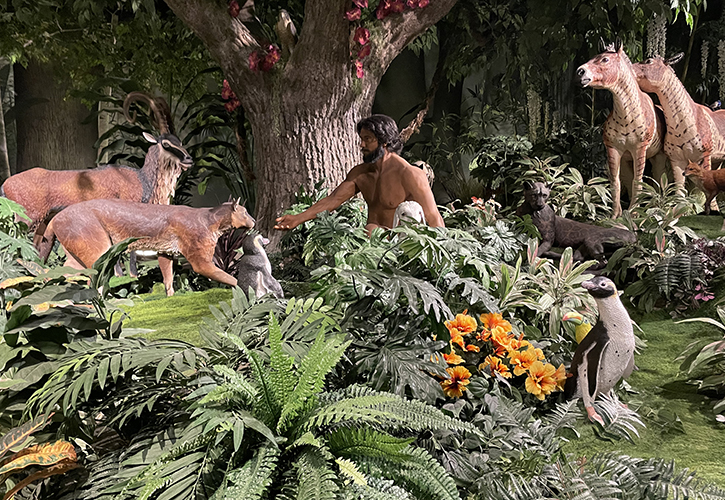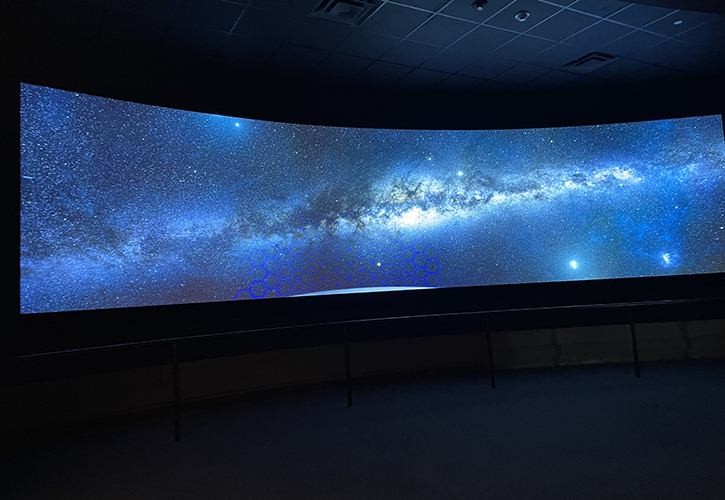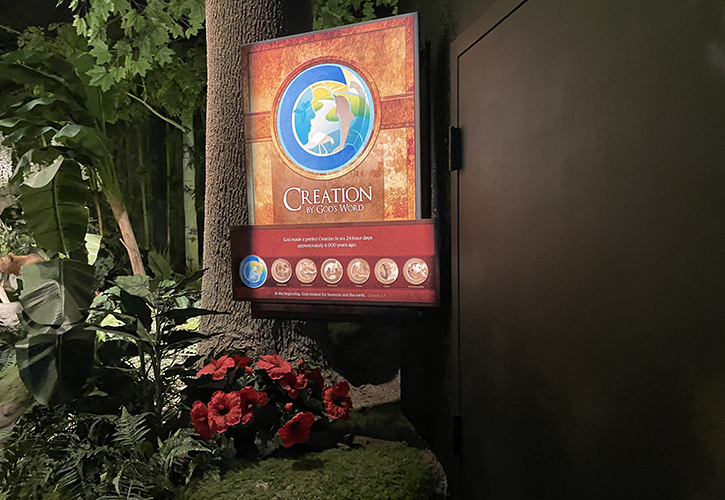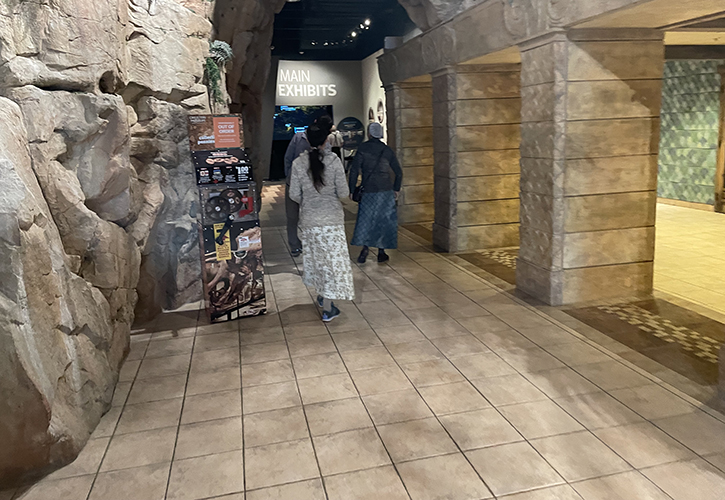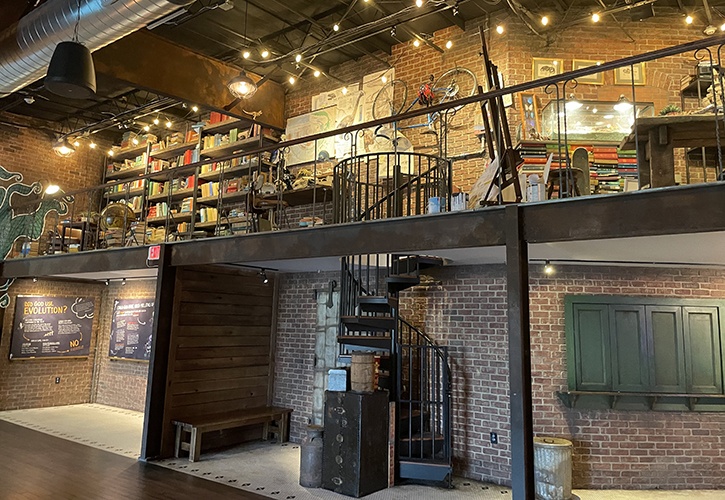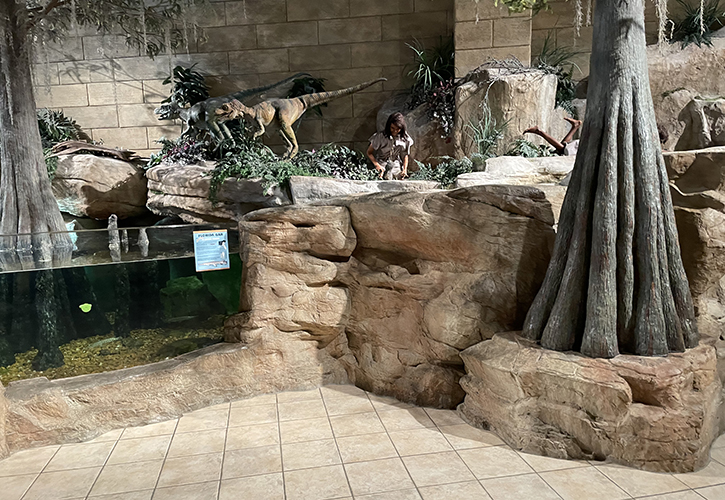College of Arts and Sciences Newsroom
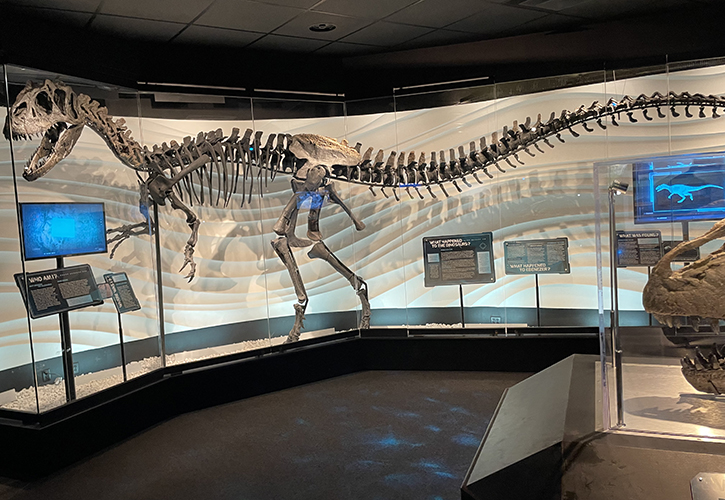
English class engages with Christian evangelical message at Creation Museum
By Kassidy Lammers ’24
Surrounded by animatronic dinosaurs and life-like displays of biblical figures, guests at the 75,000-square-foot Creation Museum find themselves immersed in a narrative of Earth’s history based on a literal interpretation of the Bible.
University of Dayton Professor of English Susan Trollinger traveled to Petersburg, Kentucky, March 10 with her second-year Core program class to experience the use of visual and material rhetoric at the museum.
Trollinger’s course, The Arguments and Visual Rhetoric of Religious Traditions, combines elements of English and religious studies to examine, among other things, the ways individuals are influenced by rhetorical strategies in visual-material spaces like the Creation Museum.
“The point of the course is for students to develop abilities in analyzing visual and material rhetoric they are immersed in,” Trollinger said. “The course is also about encountering two religious traditions that help put students’ own background into relief.”
A study of Protestant evangelicalism and fundamentalism is a central aspect of Trollinger’s course. While visiting the museum, students were encouraged to consider how their engagement with the exhibits as an audience influenced their understanding of a different religious perspective.
The Creation Museum cost $27 million when first constructed. Featuring more than 160 interactive exhibits, the museum makes use of various rhetorical strategies to promote the perspective of young Earth creationism among believers, Trollinger said.
“It was really interesting to see what they were doing rhetorically,” said Maya Drayton, a junior health sciences major from Hazel Crest, Illinois. “I really think the people that created the museum, they definitely know what they are doing in the sense of how they organize the exhibits and how they make you walk through the exhibits.”
The Department of English funded the experiential learning opportunity. Opportunities such as Trollinger’s class trip offer students an opportunity to engage with their course material on a deeper level than studying in the classroom alone.
It is one thing to study a religious tradition by reading primary and secondary sources on it,” Trollinger said. “That is crucial. If you don’t do that, you will be very limited in your ability to understand what you are looking at when you enter the Creation Museum. But to spend the better part of a day moving through it, seeing exhibits, reading the placards, observing how other visitors are engaging the exhibits — that is a whole other thing.”
After multiple visits to the Creation Museum since 2008, Trollinger and her husband, Bill Trollinger, a professor of history and religious studies at the University, published Righting America at the Creation Museum in 2016. The well-received book examines the various arguments made at the museum on behalf of young Earth creationism.
Sophomore English and history major Phillip Cicero of Dayton said Trollinger’s class has been a unique educational experience because it encouraged him to actively apply the lessons he learned in the classroom.
“I’ve been able to read and learn about this stuff, and then see it for myself and make conclusions myself, something that other classes have not given me the opportunity to do,” Cicero said. “This should be something that more classes do.”
After the trip, Trollinger asked students to write a visual-rhetorical analysis of one or more of the museum’s exhibits. The assignment required students to unpack various aspects of their experience, such as how they were positioned as visitors, the kind of ideological work done by the museum and what kinds of arguments the exhibits were used to make.
Drayton chose to write her analysis on the “Biblical Authority” exhibit, which calls on western standards of beauty in the depiction of Biblical figures such as Rahab, Jesus and David as fit, attractive individuals. After viewing the exhibit, she became curious about how the depiction affects the way visitors interpret the display.
“Once you make the decision that Rahab is beautiful, that’s what draws you in,” Drayton said. “Does that connection that you now made, make you more susceptible to the information that they are telling you?”
Unfamiliar with the young Earth creationist perspective prior to taking Trollinger’s course, Drayton said that after visiting the Creation Museum and analyzing its use of visual rhetoric, she understands how people can share such beliefs.
“I couldn’t wrap my mind around why someone would believe this,” she said. “But now having been there, I can completely understand how someone who already believes it can keep believing it.”
For more information, visit the Department of English and Core Program websites.

